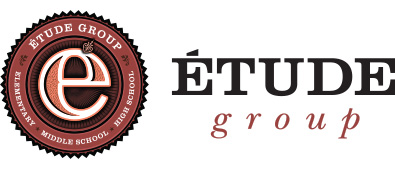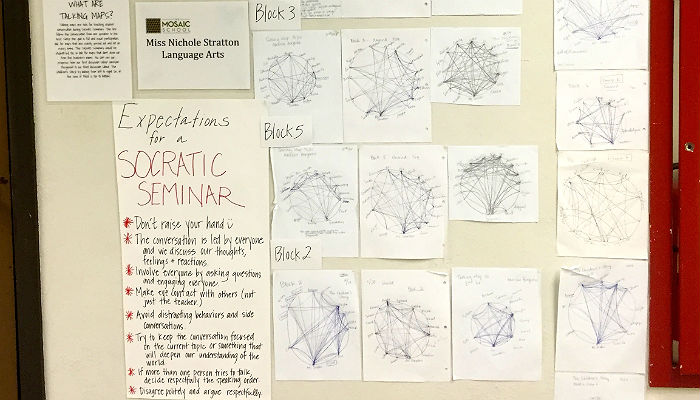
 Feeling bored? I mean, board? When you stroll through the halls at IDEAS Academy and The Mosaic School you will see boards and be able to touch them, too. During a March artists collaboration with Sebura and Gartelmann at the JMKAC, Mosaic students learned about visual aspects of original messages and designed their own signs using various sized panels. The signs speak in bold colors about safe, memorable, and peaceful places. Étude Studios Intern Erik Tetschlag has gathered these and fashioned them into wall decor and a sculpture to keep the students’ learning and messages visible to all.
Feeling bored? I mean, board? When you stroll through the halls at IDEAS Academy and The Mosaic School you will see boards and be able to touch them, too. During a March artists collaboration with Sebura and Gartelmann at the JMKAC, Mosaic students learned about visual aspects of original messages and designed their own signs using various sized panels. The signs speak in bold colors about safe, memorable, and peaceful places. Étude Studios Intern Erik Tetschlag has gathered these and fashioned them into wall decor and a sculpture to keep the students’ learning and messages visible to all.
In the Pisces Gallery, Math teacher Courtney Kooistra exhibits the process of student thinking in designing an original park. The Ideation, Research, and Creation phases of the project are described above examples of different mind maps, written proposals and color-coded scale drawings for new parks. The Driving Question for the project: How can I use my knowledge of ratios, rates and proportions to create a scale map of a park detailed enough for another person to create?
A Socratic Seminar is made visible outside of the Mosaic Language Arts room. Analytical Thematic Statements and Talking Maps show the students’ process of thinking as they analyzed and learned from stories. Formal, word processed papers demonstrate quality academic writing. Underneath are designs, like some sort of Fibonacci-esque string art, showing the patterns of classroom discussion among all the students. In the Socratic Seminar, questions rule and inquiry and discussion are valued over debate. Students learn to explore ideas with each other and engage everyone in the conversation.
Making learning visible in the galleries at Mosaic has consequences. True, the halls are decorated. The work provides memories of past events. But students also see, every day, the learning they have accomplished. They can connect it with new learning. It jogs their memories. Classes can return to it, point, touch, talk through it again, whether to revisit a concept or a thinking process used.
Best of all are the times we catch them, in pairs or small groups, maybe before or after school, or during a passing period, conversing again about the learning, the reasoning, the whys and wherefores, the next times… The Thinking lives.


